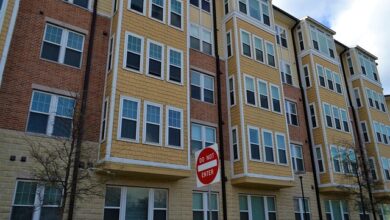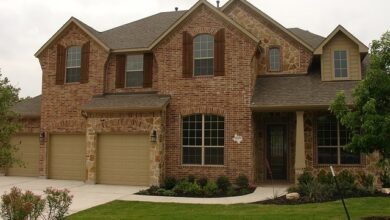What Does Homeowners Insurance Cover in Canada? A Complete Guide

Buying a home is one of the most significant investments you’ll ever make, and protecting that investment is crucial. In Canada, homeowners insurance provides financial protection against a variety of risks that could damage or destroy your property. However, understanding exactly what homeowners insurance covers—and what it doesn’t—can be confusing. This comprehensive guide will break down the key components of homeowners insurance in Canada, helping you make informed decisions about your coverage.
1. What Is Homeowners Insurance?
Homeowners insurance is a type of property insurance designed to protect your home and personal belongings from unexpected events like fires, theft, or natural disasters. It also provides liability coverage in case someone is injured on your property or you accidentally cause damage to someone else’s property.
In Canada, homeowners insurance is not legally required, but most mortgage lenders will require you to have it as a condition of your loan. Even if you own your home outright, having adequate insurance is essential to safeguarding your financial future.
2. Key Components of Homeowners Insurance
A standard homeowners insurance policy typically includes several types of coverage. Let’s explore each one in detail:
a) Dwelling Coverage
- What It Covers: The structure of your home, including walls, roof, floors, and built-in appliances like ovens and dishwashers.
- Why It’s Important: If your home is damaged by a covered peril (e.g., fire, windstorm, or vandalism), this coverage pays for repairs or rebuilding.
- Replacement Cost vs. Actual Cash Value: Policies may offer replacement cost coverage (pays to rebuild without deducting depreciation) or actual cash value (deducts depreciation). Replacement cost is preferable but usually more expensive.
b) Personal Property Coverage
- What It Covers: Your belongings inside the home, such as furniture, electronics, clothing, and jewelry.
- Limits and Exclusions: Most policies cover personal property up to a percentage of your dwelling coverage (typically 50–70%). High-value items like art or antiques may require additional endorsements or separate policies.
- Off-Premises Protection: Many policies extend coverage to belongings stolen or damaged while away from home, such as luggage during travel.
c) Liability Coverage
- What It Covers: Legal responsibility for injuries or damages you, your family members, or pets cause to others. For example:
- A guest slips and falls in your home.
- Your dog bites someone at the park.
- Why It’s Important: Liability claims can result in costly lawsuits. This coverage helps pay for legal fees, medical expenses, and settlements.
- Typical Limits: Liability coverage often starts at $100,000 but can be increased for added protection.
d) Additional Living Expenses (ALE)
- What It Covers: Costs incurred if your home becomes uninhabitable due to a covered loss. This includes hotel stays, meals, and other temporary living arrangements.
- Why It’s Important: ALE ensures you’re not left financially stranded while your home is being repaired.
e) Detached Structures Coverage
- What It Covers: Structures separate from your main home, such as garages, sheds, fences, and gazebos.
- Coverage Limits: Typically limited to 10% of your dwelling coverage unless you purchase additional protection.
3. Common Perils Covered by Homeowners Insurance
Most standard homeowners policies in Canada are “named perils” or “comprehensive” policies. Here’s what they generally include:
Named Perils Policy
- Covers specific risks explicitly listed in the policy, such as:
- Fire and lightning
- Windstorms and hail
- Theft and vandalism
- Water damage from burst pipes
- Falling objects
Comprehensive Policy
- Provides broader coverage, protecting against all risks except those specifically excluded (e.g., floods, earthquakes, and sewer backups).
4. What Isn’t Covered by Standard Homeowners Insurance?
While homeowners insurance offers extensive protection, there are some notable exclusions. You may need to purchase additional endorsements or separate policies for these risks:
a) Floods and Sewer Backups
- Standard policies don’t cover overland flooding or sewer backups. These require optional endorsements, which are highly recommended in flood-prone areas.
b) Earthquakes
- Earthquake coverage must be purchased separately and is particularly important in regions like British Columbia.
c) Wear and Tear
- Damage caused by normal wear and tear, neglect, or poor maintenance isn’t covered.
d) Intentional Acts
- Losses resulting from deliberate actions (e.g., arson) are excluded.
e) Business Activities
- If you run a business from home, you’ll likely need commercial insurance to cover equipment and liability.
f) High-Value Items
- Expensive jewelry, fine art, and collectibles may exceed your policy’s limits and require special endorsements.
5. Factors That Affect Your Premiums
Several factors influence the cost of your homeowners insurance:
- Location: Homes in areas prone to severe weather, crime, or natural disasters typically have higher premiums.
- Home Value: More expensive homes cost more to insure due to higher replacement costs.
- Construction Type: Brick or concrete homes are often cheaper to insure than wooden structures.
- Security Features: Installing smoke detectors, burglar alarms, and smart home devices can lower your rates.
- Claims History: Frequent claims or a history of high-risk behavior can increase your premiums.
6. Optional Endorsements and Riders
To enhance your coverage, consider adding optional endorsements (also called riders):
- Water Damage Endorsement: Covers sewer backups and overland flooding.
- Earthquake Insurance: Protects against seismic activity.
- Home-Based Business Insurance: Covers business equipment and liability.
- Identity Theft Protection: Helps recover stolen funds and repair credit after identity theft.
- Scheduled Personal Property: Provides higher limits for valuable items like jewelry or artwork.
7. How Much Coverage Do You Need?
Determining the right amount of coverage involves evaluating several factors:
- Rebuilding Costs: Estimate how much it would cost to rebuild your home using current construction prices—not its market value.
- Personal Property Value: Take inventory of your belongings and calculate their replacement cost.
- Liability Needs: Consider potential risks, such as owning a pool or aggressive dog breed, and opt for higher liability limits if necessary.
- Additional Living Expenses: Ensure ALE coverage is sufficient to cover temporary housing and daily expenses during repairs.
8. Tips for Choosing the Right Policy
Here are some practical tips to help you select the best homeowners insurance:
a) Compare Quotes
Shop around and compare quotes from multiple insurers. Rates can vary significantly, so getting multiple offers ensures you get the best deal.
b) Bundle Policies
Many insurers offer discounts if you bundle your home and auto insurance.
c) Review Coverage Annually
Your needs may change over time. Regularly review your policy to ensure it still meets your requirements.
d) Understand Exclusions
Read the fine print to understand what’s excluded from your policy. Address gaps with endorsements or separate policies.
e) Work with a Broker
If you’re unsure where to start, consult an independent insurance broker who can help you navigate options and find the best coverage.




